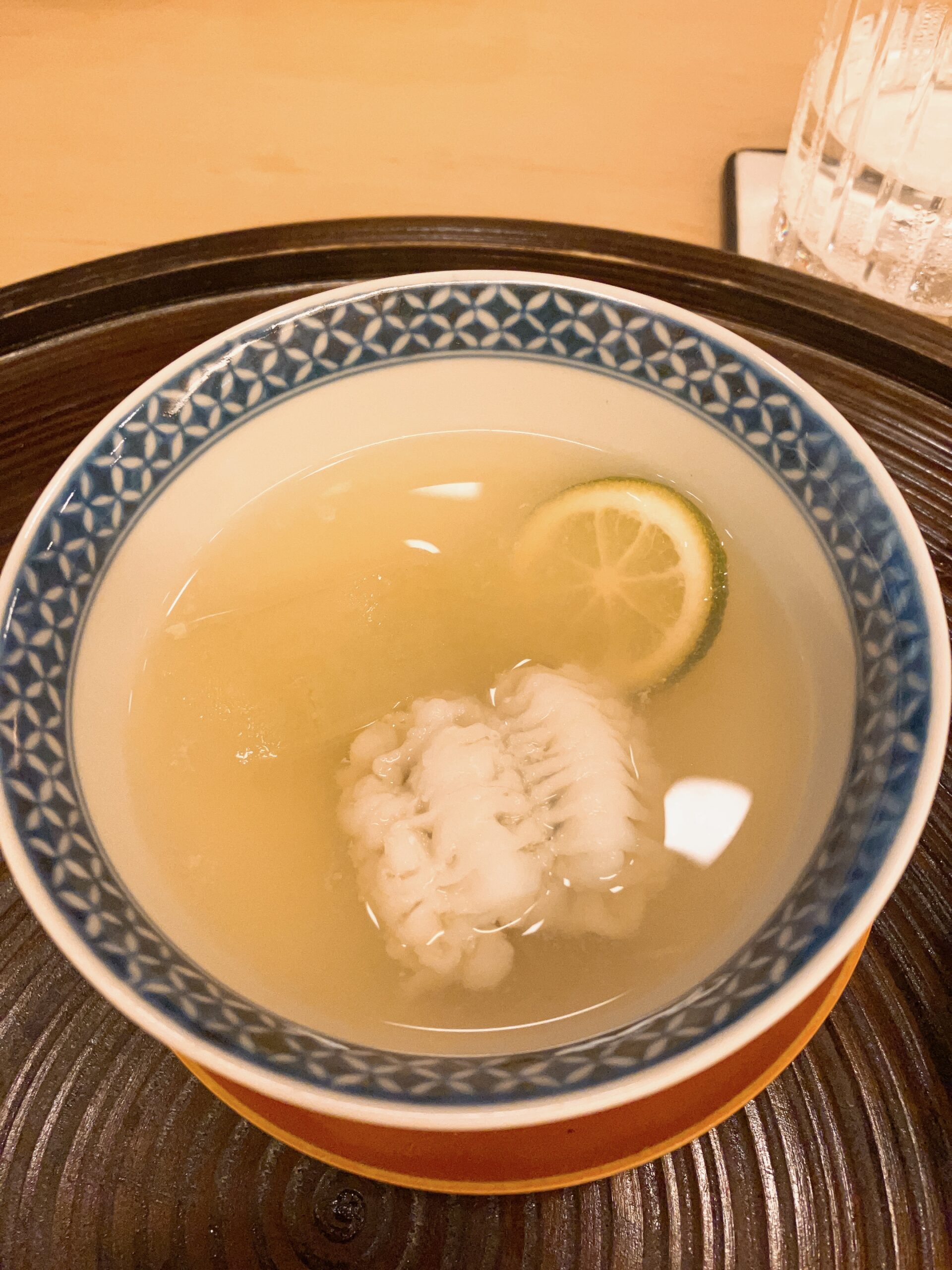Beginning of Autumn
On August 7th, the calendar turned autumn. Really autumn? Still hot and humid in Kyoto but if you feel the wind in the morning, the breeze has somewhat changed, the sunset becoming a little faster day by day.
Though, I am going to say it again, it’s still hot and humid. To get through this time, there are some power foods we traditionally eat. Eel (Unagi) and daggertooth pike conger (Hamo). Hamo is especially popular in the Kansai area, particularly in Kyoto and Osaka. This fish is typically in season from May to October, with July being the peak time when it is considered most delicious due to its rich flavor and fat content after the rainy season. It is prepared in various ways such as sushi, soups, or boiled dipped in red plum or miso with vinegar sauce. The consumption of hamo is closely tied to local festivals, the Gion Festival in Kyoto and the Tenjin Festival in Osaka, where it is often featured as a delicacy.
Unagi is believed to provide stamina and energy during the hot months. It is often grilled and served with a sweet soy-based sauce, and it is commonly consumed during Doyo no Ushi no Hi, a day in July that celebrates the eating of eel to promote health and vitality in the summer heat.
Around 95% of unagi on the market is made by farming, which means only 1 to 5% is natural. They have complex life cycles that begin in the ocean but they migrate to freshwater environments to grow after they turn to glass eels. But due to strict regulations to prevent declining wild populations and environmental changes, most of the unagi are farmed. Even farming requires specific conditions to thrive. They are sensitive to water quality and temperature, needing water temperatures between 23°C and 28°C for optimal growth. Farmers often use recirculating tank systems or ponds, which must be carefully managed to maintain cleanliness and prevent disease. Regular grading of eels is necessary to prevent cannibalism, as larger eels can eat smaller ones if kept together.
Obon
Probably because most of the Japanese people were farmers and believed that everything was given by god, we tend to connect the season with food. Hamo and unagi is a perfect example and most of all my favorite sweets.
I notice the season whenever I go to my tea lesson and see the sweets. Yesterday was ohagi, which is a sweet made of glutinous rice and red bean paste. This we usually eat in Obon, celebrated in mid-August, is a Buddhist event where families welcome the spirits of their ancestors back. It is believed that the boundary between the living and the dead becomes thinner, allowing ancestors to visit. Ohagi is often offered at graves in the old days (not anymore as insects or birds would come and eat them), symbolizing a way of expressing respect and remembrance for ancestors, as well as a means of connecting with family traditions. The red color of the azuki beans used in ohagi is thought to ward off evil spirits.
These are events and excuses for family gatherings but now with the younger generation, they have their own thoughts and ways which is kind of sad. The bond between families has become weaker and thinner, but this might be the shape of a new family? I don’t know but if somebody that read my blog understands how the traditions are, then that’s my happiness.





Comment